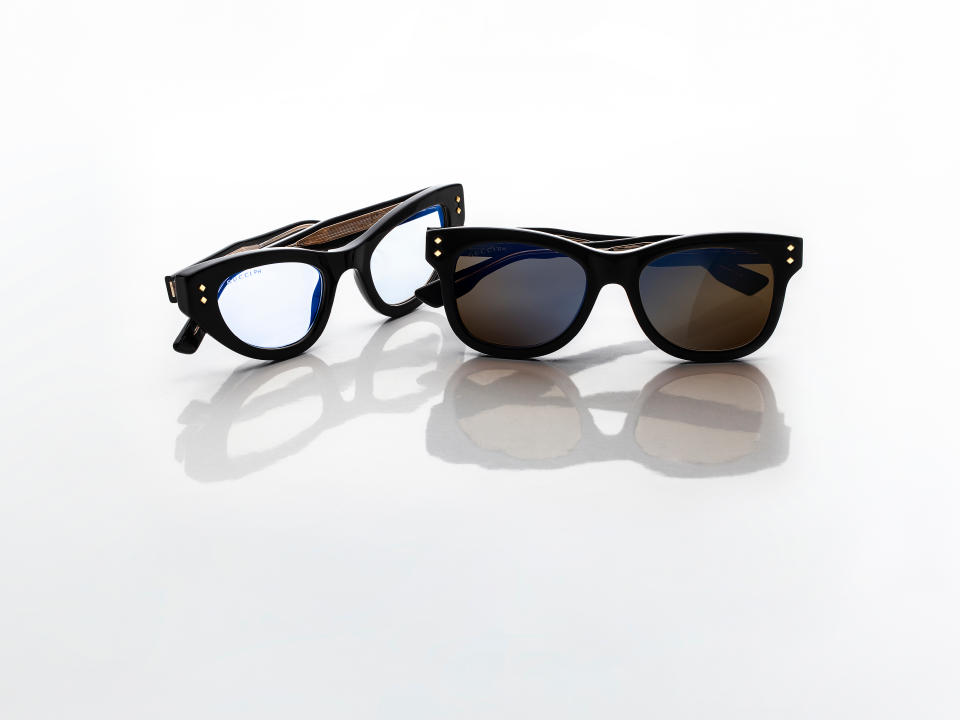Kering Eyewear Builds Luxury Portfolio, Invests in Technology, Style and Sustainability

MILAN — “Our strategy is based on the fact that we want to be the most relevant, the best and the one and only luxury eyewear company in the world.”
Roberto Vedovotto, president and chief executive officer of Kering Eyewear, has a clear vision for the company he set up and has been building since 2014 “from zero to hero,” as he is fond of saying. In seven years, Kering Eyewear has grown to reach revenues of 706 million euros in 2021, up 45 percent on a comparable basis.
More from WWD
Vedovotto, who always credits Kering chairman and CEO François-Henri Pinault for his visionary support in “setting out to change the industry and its licensing model” by taking control of the group’s eyewear business.
Kering Eyewear, which is headquartered in the 17th-century Villa Zaguri in Padova, about an hour away from Venice, develops and distributes collections for brands ranging from Gucci, Saint Laurent, Bottega Veneta and Alexander McQueen to Alaïa, Brioni, Boucheron, Pomellato, McQ and Puma. In March 2017, Compagnie Financière Richemont became a stakeholder in Kering Eyewear, which led to the production of Cartier eyewear. Collections for Montblanc, Courrèges and Balenciaga have been added and, most recently, for Chloé and Dunhill.
Earlier this month, Kering Eyewear revealed the acquisition of Maui Jim, which will become the second proprietary brand after Lindberg, which was bought last year.
Vedovotto said Danish luxury brand Lindberg, which was consolidated in the last quarter of 2021, is “the best we could have hoped for, with its super ultra luxury frames.” He underscored the technological and design value of the optical frames, which are lightweight in titanium, hypoallergenic, multi-adjustable and screwless. “Lindberg is quite unique, and we plan to fully exploit this very important revenue growth avenue.”
He said proudly that Maui Jim is “an iconic brand, the world’s largest independent sunglass brand, with product characteristics that are second to none and the best sunglass lenses in the market.”
The transaction is expected to close in the second half of 2022, once it clears routine regulatory hurdles. Founded in 1987, Maui Jim is known for its PolarizedPlus2 lens technology, which protects from glare and UV rays while enhancing color naturally perceived by the eye.
Maui Jim allows Kering Eyewear’s portfolio to be “much more complete now, truly the best available to our clients. We have a lot on our plate and there is still a huge potential to grow these brands. We need to stay focused,” Vedovotto observed.
Asked if his strategy had changed over the years, the executive clarified that the idea continues to be to “fully exploit the potential of our brand portfolio, the brands of our shareholders Kering and Richemont, but we have had the opportunity to make two fantastic acquisitions. We are always keeping our eyes wide open, but [potential additional brands] have to be relevant, make sense and be totally complementary to our portfolio.”
Last year, excluding sales to major international distributors and stores operated by the group’s brands, the Europe, Middle East and Africa region was once again Kering Eyewear’s main market, followed by the Americas. The proportion of revenue generated in the Asia Pacific region, including Japan, again fell slightly in 2021 due to the strong weight of travel retail in that region.
The company “came out of the pandemic stronger,” noted Vedovotto, despite the hardships, with a strong recovery in North America and Europe. “The goal was to stay close to our people and customers, through video calls and digital events, we were always there, with our operations open and our team intact — that was very important.”
In terms of distribution channels, local chains and the “three Os” — opticians, optometrists and ophthalmologists — constitute the main sales channel for Kering Eyewear, representing more than 50 percent of total sales in both 2021 and 2020. This channel was the one that grew the most in 2021, having shown its resilience by keeping revenue stable in 2020.
Sunglasses account for 55 percent of revenues and, conversely to some competitors, Kering Eyewear did not see a slowdown in this segment, Vedovotto said. To be sure, he did say that sales of prescription glasses were boosted by the effects of the pandemic, given the increased use of screen-based devices during lockdowns.
In fact, Kering Eyewear expanded its product range with the launch of the new Blue & Beyond project, including an assortment of blue light and photochromic UV protection glasses, introduced for the first time in the luxury eyewear industry.
The Blue & Beyond project consists in the combination of high-end classic frames with dual-innovation, smart lenses that are specifically conceived to relieve intense eyestrain both indoors and outdoors, characterized by a blue-light-filtering treatment with photochromic technology, which allows a reduction in the impact of high-energy light from laptops and digital devices, while also protecting the eyes by darkening the color when exposed to sunlight.

image courtesy of Kering Eyewear
Asked about trends, Vedovotto said gender-fluid styles are important, with customers choosing “products based on how they express themselves more than qualifying by gender” and as part of a total look, to express their own style.
Also, he noted that frames “must have add-ons, such as chains, earrings or charms. This has been an interesting and quite successful trend.”
Vedovotto also pointed to Balenciaga’s introduction last September of the innovative LED Frame, combining style and technology with a bold, rectangular frame that sits on thick, tapering arms, one of which contains a lightweight LED system that illuminates the Balenciaga logo. The logo animates in multiple colors and pattern and is controllable with a tap sensor.
The light can either blink, remain static, or fade from one color to another, in blue, red, green, purple, yellow and white.
The executive also pointed to Kering Eyewear’s increased attention to sustainability in response to more demanding customers who are aware of the environmental impact of products, offering bio-based lenses and frames, for example.

Jean-Francois-Robert/Modds
Sign up for WWD's Newsletter. For the latest news, follow us on Twitter, Facebook, and Instagram.

